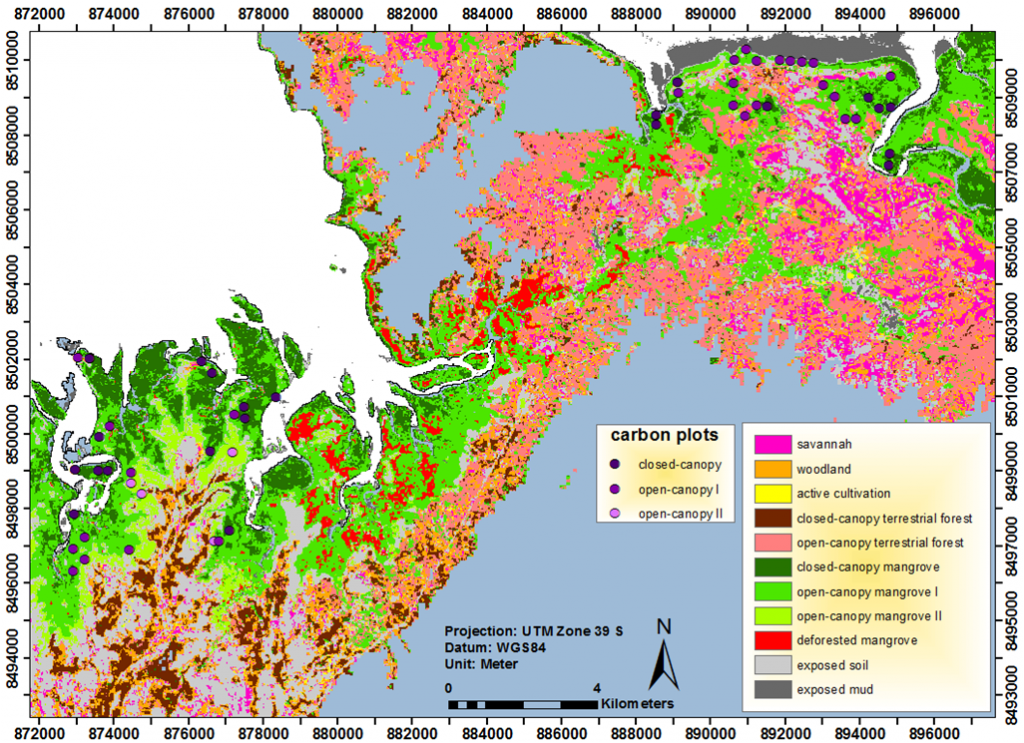by Trevor Jones, Geospatial Analyst & Manager – Blue Carbon Science, Vancouver
Update from Blue Ventures’ newest branch in Vancouver, Canada.
Greetings from the Pacific Northwest! After two exciting and fruitful years in Madagascar, I have moved to Vancouver, Canada to continue my role as Blue Carbon Science Manager and Geospatial Analyst for Blue Ventures. Since September, I have been stationed as a visiting Post-doctoral Research Scientist in Blue Ventures’ first North American branch at the Integrated Remote Sensing Studio of the Faculty of Forestry, University of British Columbia.

A view of Vancouver (Photographs copyright of the University of British Columbia)
During my time in Madagascar I watched the Blue Forests team grow from just three to sixteen staff, working in collaboration with an even greater number of community members, and supported by numerous Malagasy and international graduate students, interns and volunteers (see my previous blog post for a description of the many partnerships we developed during my time in Madagascar). Thanks to the hard work of all involved, our science crew have now established hundreds of field plots during more than ten expeditions throughout Madagascar’s west coast, characterising ecological variability and estimating carbon stocks in Ambaro and Ambanja bays, Mahajamba bay, Belo sur Tsiribihina, Velondriake and Ambondrolava (see map of study site locations below).

Not a bad sight to look at from the office! (Photographs copyright of the University of British Columbia)
The overall aim of our work is to make tangible contributions to poverty alleviation, climate change preparedness and biodiversity protection in increasingly vulnerable coastal communities. Our research has resulted in Madagascar’s first estimates of above- and below-ground mangrove carbon stocks (including carbon soil), supporting a growing body of scientific evidence that mangroves are amongst the most carbon dense forests in the tropics. Our work has also resulted in first-of-their-kind satellite imagery derived maps for several of our study sites (e.g., Ambaro and Ambanja bays; Tsiribihina delta).
Recently, our mapping and carbon stock results from Ambaro and Ambanja Bays have been published in the journal Forests and are allowing us to trial the application of a Verified Carbon Standard (VCS) approved REDD+ methodology to mangrove forests. With the feasibility of mangrove REDD+ assessed through the lens of a VCS methodology, we also will make further contributions to VCS methodologies currently being developed for the conservation of intact wetlands.

The distribution of Madagascar’s mangroves and the location of Blue Forests study sites.
Thanks to numerous socioeconomic surveys, participatory rural appraisals and mapping sessions, we continue to learn about the past and current relationships between local communities and mangrove resources, as well as future mangrove uses. Across our study sites, and going beyond carbon financing mechanisms (e.g., REDD+), we continue to investigate the potential of sustainable incomes, looking especially at improved and expanded forest and fisheries management. With potential Payment for Ecosystem Services (or PES) opportunities identified, community-driven initiatives that maximise the potential benefits drawn from conserved and restored mangrove and surrounding habitats can be built.

Mangroves and surrounding land-cover categories circa 2013. Map is derived from Landsat satellite imagery and was made relying on extensive field observations. Also shown are example locations of carbon plots established in 2012.
While the many outstanding challenges facing our projects remain (see Shining a light on Madagascar’s mangroves), our full-time presence in North America is bringing new opportunities to collaborate and share knowledge. Building on our existing partnership with the Sea Around Us Project at the University of British Columbia, we are exploring new ways to collaborate with the faculty of Forestry, the Fisheries Centre and the Biodiversity Research Centre. We are also now well placed to pursue and attend important training and knowledge exchange sessions, such as the Geo for Good User Summit at Google headquarters in California, which I attended this past November. During this Summit, BV joined dozens of other non-profits from throughout the world to exchange experiences and learn how to utilize the full range of Google mapping technologies (see The Geo for Good Summit: putting cutting edge mapping technologies in the hands of non-profits).
Project-wide, we remain dedicated to working with communities to spread the word about the full host of critical services provided by healthy, intact mangrove ecosystems, and to explore ways to empower communities by harnessing these services to fund mangrove conservation, restoration, reduced-impact use and alternative/enhanced livelihoods. With our dedicated team plugging away as always, watch this space for updates!

